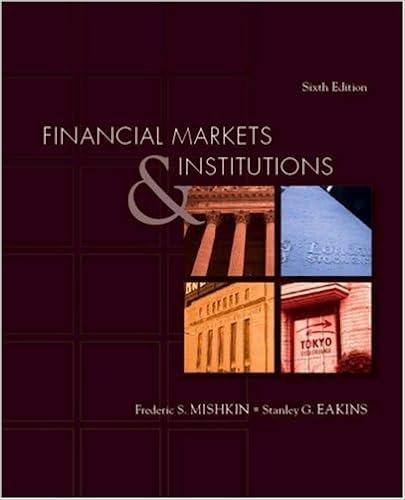Question
Your initial investment stake will be $50,000 (the portfolio should use at least 95% of the initial investment amount, but do not use more than
Your initial investment stake will be $50,000 (the portfolio should use at least 95% of the initial investment amount, but do not use more than $50,000). You may purchase stocks (common or preferred stock), bonds, corporate or U.S. Treasury bonds, mutual funds, futures contracts, or options. You will use the closing prices from the first day of class to determine the price of each issue. Only whole lots of any issues may be acquired: that is no less than 100 shares of common or preferred stock with a maximum dollar purchase amount of $10,000, no less than five corporate bonds and U.S Treasury bonds with a maximum value of $10,000 (par or face value $1000). For mutual funds, your maximum amount of dollar investment is $20,000. Your options, future contracts, and any other related investment instrument cannot exceed $10,000. Take into consideration that transaction costs are a flat 6% of the gross purchase.
For the Final Project,
Create a model portfolio of investments, which may include stocks, bonds, mutual funds, options, and futures contracts. Include the following:
- Introduction
- Describe the risk preferences of your investment strategy.
- Assess your investment alternatives available to individual investors as they relate to professional investors.
- Investment alternatives should be stated in term of both risk and return.
- Body
- Summarize the various investment securities and techniques you identified in the assignments in Week 1 through Week 4. Explain the impact of market factors that influence them. In your portfolio, you should include your company profiles or fact sheets, your finance analysis, the financial news on your companies, your performance charts, and a securities description.
- Calculate an annualized return on the portfolio (beginning date of the course to the ending data of course).
- Compute the capital asset pricing model (CAPM) return on equity for your selected companies common stock, and compare it to the current return on equity; discuss if the CAPM return on equity is more or less than the current return on equity provided by a financial analyst.
- Summarize the risks of your portfolio. Determine which areas you would rebalance in your portfolio and discuss why.
- Summarize the performance and return of your portfolio.
- Conclusion
- Discuss the lessons you have learned from BUS405: Principles of Investments.
- If you had more time to manage your portfolio, what additional changes would you make?
Step by Step Solution
There are 3 Steps involved in it
Step: 1

Get Instant Access to Expert-Tailored Solutions
See step-by-step solutions with expert insights and AI powered tools for academic success
Step: 2

Step: 3

Ace Your Homework with AI
Get the answers you need in no time with our AI-driven, step-by-step assistance
Get Started


